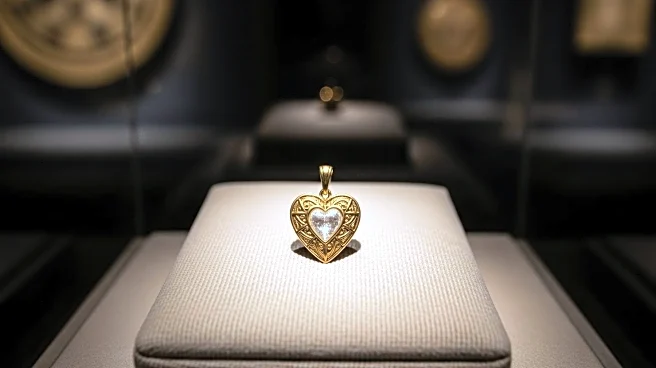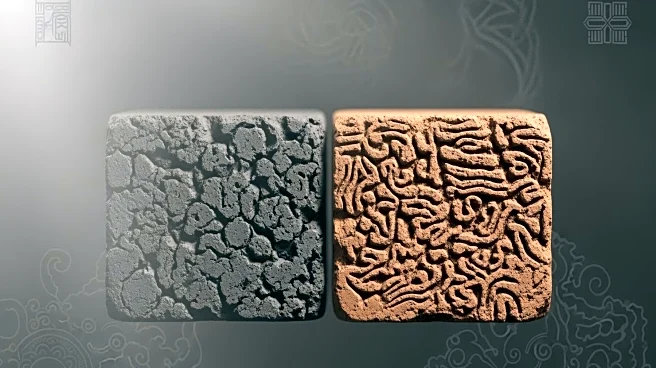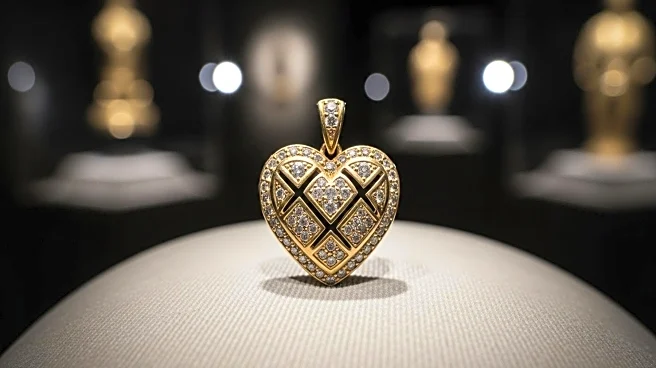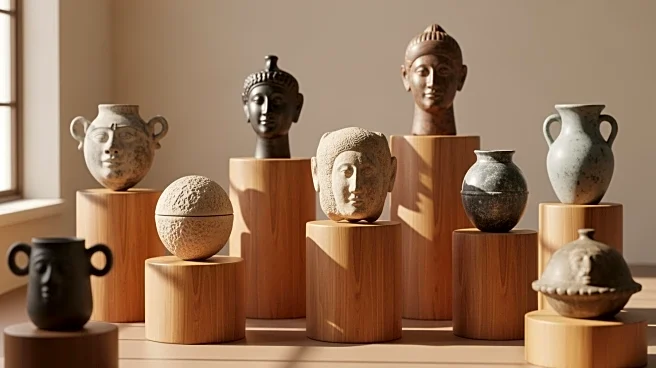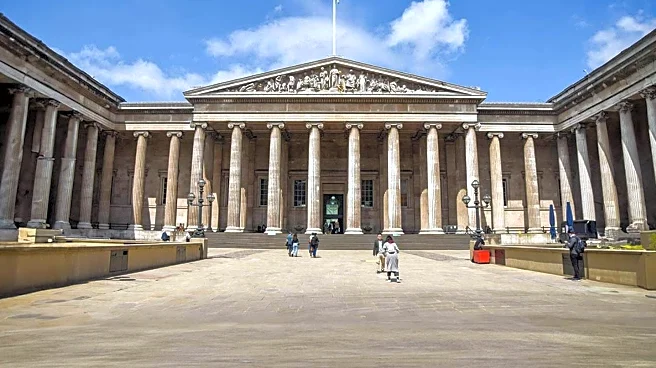What's Happening?
The British Museum has initiated a fundraising campaign to acquire a historically significant pendant known as the 'Tudor Heart.' Discovered by a metal detectorist in 2019, the 24-carat gold pendant bears
symbols of the Tudor Rose and Catherine of Aragon's pomegranate, linking it to King Henry VIII's first marriage. The museum aims to raise £3.5 million ($4.6 million) by April 2026 to prevent the piece from falling into private hands. The Julia Rausing Trust has already pledged £500,000 towards this effort. The pendant is believed to have been commissioned for a royal tournament in 1518, celebrating the betrothal of Henry and Catherine's daughter, Mary, to the French heir apparent. The British Museum's curator of Renaissance Europe, Rachel King, emphasized the pendant's importance in providing insights into the splendor of Henry VIII's court and the stories of Katherine and Princess Mary.
Why It's Important?
The acquisition of the Tudor Heart pendant is significant for historical preservation and public education. It offers a tangible connection to the Tudor dynasty, particularly the marriage of Henry VIII and Catherine of Aragon, which played a pivotal role in English history. The pendant's preservation in a public institution like the British Museum ensures that it remains accessible for educational purposes and further research. The piece also highlights the cultural and political dynamics of the Tudor court, providing insights into the era's state celebrations and royal customs. By securing the pendant, the museum can continue to explore and share the narratives of influential historical figures and events that shaped the course of English history.
What's Next?
The British Museum will continue its fundraising efforts, encouraging public donations through an online portal. If successful, the museum plans to conduct further research on the pendant to uncover more details about its origins and significance. The campaign's outcome will determine whether the pendant remains in public hands or is sold to private collectors. The museum's efforts may also inspire similar initiatives to preserve other historical artifacts, emphasizing the importance of public access to cultural heritage. Stakeholders, including historians, educators, and the general public, are likely to support the museum's mission, recognizing the pendant's value in understanding the Tudor period.
Beyond the Headlines
The discovery and preservation of the Tudor Heart pendant raise broader questions about the ethical considerations of artifact ownership and the role of public institutions in safeguarding cultural heritage. The campaign highlights the challenges faced by museums in acquiring significant historical pieces amidst financial constraints. It also underscores the importance of collaboration between private trusts and public entities in preserving history. The pendant's story reflects the complexities of royal marriages and their impact on political and religious shifts, offering a deeper understanding of the Tudor era's influence on modern governance and societal norms.
